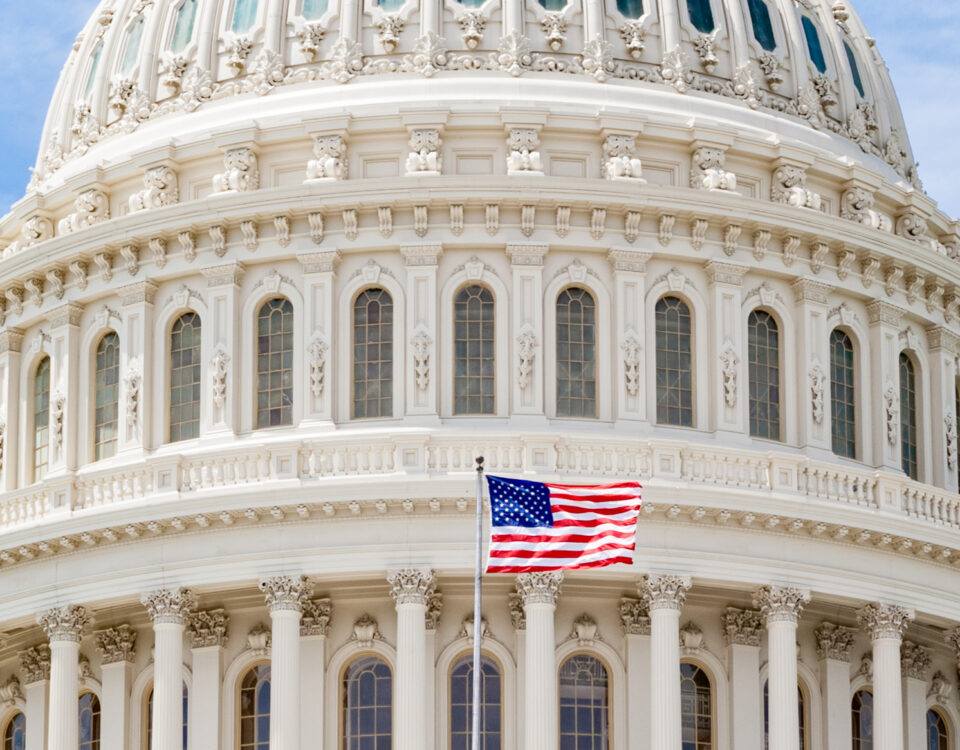
The Friday 5
August 25, 2017
Meet the Team: Zachary Heltsley, New Advocacy Intern
August 30, 2017The 3 P’s of Tax Reform

Congress returns from their August recess to Washington after Labor Day and is preparing for a busy fall, with debates over the debt ceiling, the budget, and tax reform anticipated.
During the 2016 campaign cycle, pro-business members of Congress and the President touted tax reform as a major policy goal, and promises were made that comprehensive tax reform would be a priority for the new Congress and Trump Administration. However, for the past seven months Congress was gridlocked on other important issues, like healthcare and immigration, and tax reform has taken a backseat.
We, along with our partners at the U.S. Chamber of Commerce, believe it’s time for Congress to re-focus on issues that can gain bipartisan support; and if there’s one issue that all business owners seem to agree on, it’s that our tax code is overly complicated, inequitable, and costly.
In a recent call with the U.S. Chamber, they highlighted the 3 P’s of the tax reform debate, and what we can expect this fall:
Procedure: Even though it’s only September, Congress has very little time in their chambers when they return after recess; the Senate has 17 days left, and the House has only 12. This is very little time to accomplish a hefty agenda including raising the debt ceiling, approving a budget (which faces additional hurdles per the President this week), and passing tax reform. The debt ceiling expires on September 29th, and the budget expires on September 30th, so the month of September will focus on these issues.
It’s also unlikely that a tax reform proposal will make it through the Senate with the required 60 votes. (Because, well, what does these days?) Therefore, a tax reform package will likely get attached to the budget, which goes through a process called “reconciliation.” Bills going through the reconciliation process require only a simple majority to pass, meaning the bill only needs 51 votes in the Senate. So, tax reform’s best hope at passing this year will be to attach it to the budget.
Policy: Significant changes to the U.S. tax code haven’t been made in more than thirty years, and there’s a reason for that: it’s a feat to accomplish. While the President’s plan called for lowering the corporate tax rate from 35% to 15%, Congress is looking at ways to lower it to around 20 or25%. In order to accomplish this, Congress will have to find new revenue to make up for the loss in tax revenue. One of the easier ways to do this will be cutting existing exemptions. While business wants to see the corporate tax rate lowered, many businesses benefit from very specific tax exemptions. Making changes to these will create new winners and losers, and no member of Congress wants businesses in his district to be on the losing side. Finding consensus around which exemptions to cut will be difficult.
The hunt for revenue was further complicated when House Republicans jettisoned the controversial Border Adjustment Tax from their tax reform package. The Border Adjustment Tax was a way to disincentive importing goods to the U.S. by levying a tax on them, but was met with much opposition from the retail and manufacturing industries who argued this would only increase prices for consumers. While this change may make the House’s tax reform plan more palatable, the Border Adjustment Tax was also supposed to raise $1 trillion dollars in revenue over the next ten years, offsetting a large portion of the corporate tax rate reduction.
In order for bills passed through the reconciliation to become permanent law, they have to be revenue neutral, which means Congress will have to find significant revenue in order for tax reform to work.
Politics: While we like to focus on policy instead of politics, the politics around tax debate cannot be ignored. Republicans held onto the House and turned over the Senate and White House by making some big promises to the American people and business community. In the first half of the year, they’ve been unsuccessful on many of these promises, like on healthcare and immigration. This could actually help the chances of tax reform getting done, as Republicans in Congress and the White House are intent on accomplishing something from their agenda. While domestic and foreign crisis could be a distraction to Congress this fall, tax reform could be an agenda item that factions in the Republican Party and members of the Democratic Party can rally behind.
Chamber Support
We at the Upstate Chamber Coalition encourage you to reach out to your representatives and let them know how the current U.S. tax code may be making it harder for you to do business. This is an opportunity to have your voice heard on an issue that rarely comes around, and Congress needs to hear from the business community. The Upstate Chamber Coalition will continue to advocate for ways to make our tax code less complicated and less costly to businesses, and we will support reforms that create jobs and spur economic growth.
If you have questions about tax reform, or want to find out more ways to get involved with this issue, please contact us!



